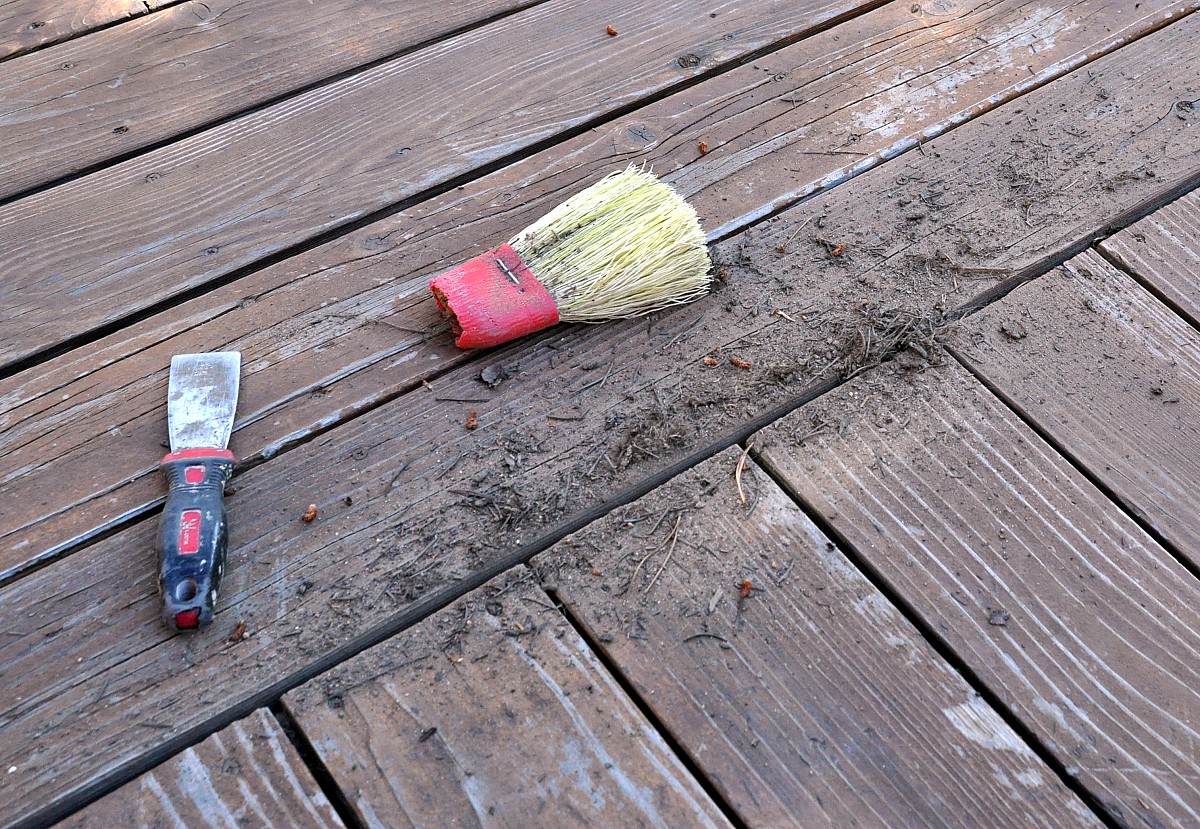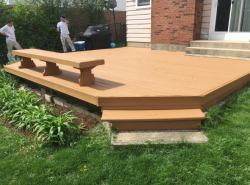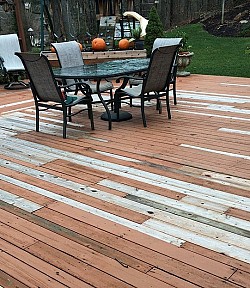All Hands on Deck!
 A couple of days ago, I fired up the BBQ on my deck after months of winter hibernation. As the cold and chill of winter slips away, its time to think about spring cleaning and all of the little projects that seem to pop up like the season’s first bulbs. One area that often gets overlooked is the deck. Since decks make up a “second living room” for many folks during the spring and summer seasons, keeping them in shape is crucial. It only takes a little work and can ensure their longevity.
A couple of days ago, I fired up the BBQ on my deck after months of winter hibernation. As the cold and chill of winter slips away, its time to think about spring cleaning and all of the little projects that seem to pop up like the season’s first bulbs. One area that often gets overlooked is the deck. Since decks make up a “second living room” for many folks during the spring and summer seasons, keeping them in shape is crucial. It only takes a little work and can ensure their longevity.
Debris Removal
Having rebuilt lots of decks, and refinished many more, I have picked up a few tips that can lead to a longer lasting deck. One of the biggest areas of vulnerability is the top of the joist between the deck boards. Accumulations of dirt, leaves, pine needles, sand and a mix of other crud finds its way into these gaps and it can sit there for years. These little piles of dirt retain moisture and can cause the tops of these joists to rot. Once this rotting takes hold, it retains its own moisture and the damage can progress rapidly.
One of my spring rituals is to crawl about on the deck with a stiff putty knife and a small whiskbroom. I use the putty knife to scrape out the debris and the broom to sweep it away. Most of the time the spring winds help with the sweeping, so I do mostly scraping. I also check the area up near the house for piles of dirt or vegetation debris. Six months of wind accumulation can usually be brushed aside in a few minutes. I perform this step every spring on my deck and also recommend it to my clients. This step is an absolute must if you are planning to stain or seal your deck. A small pile of dirt that has been top coated with stain pretty much sets up camp for a long, long time.
Inspect for Other Damage
Since you are spending a bit of time going over your deck, it is also a good idea to look for other problems that may be sneaking up on you. Loose screws or popped nails can cause boards to flex or cause minor tripping and barefoot hazards. After cleaning out the debris piles, a few minutes with a hammer or screw gun can take care of these wayward bits of metal. I also like to check if any of the deck’s railings have loosened up. My deck’s rail posts are through bolted and as the wood has adjusted to the dry climate have shrunk a bit. A quick pass with the socket wrench and the bolts are snug and the railing secure. If your deck uses lag screws, these can also be tightened up, but don’t get carried away… old wood can get stripped and leave the lag bolts spinning freely. If your lag bolts fall into this latter group, replacing them with through hex bolts can keep your railings tight.
Evaluate for Sealing or Staining
If your deck is wood, then it makes good sense to stay on top of its maintenance. I oil my deck about every 18 months to 2 years. There are dozens of products available that provide a wide range of protection for deck boards. I have found that oil-based products hold up far better than any water-based product, and that the penetrating variety is easier to maintain than the surface finish types. Composite or engineered decking is not subject to the same deteriorating effects of water and UV radiation, but often benefits from some routine cleaning. Here a stiff garage broom, your trusty garden hose and an afternoon of effort can bring back some of your deck’s original glory.
My Ipe and Redwood deck will be going on its 14th year this summer and has served me well. It also still looks brand new due to my efforts. The beauty of real wood has always appealed to me and I don’t mind spending a Saturday every so often to keep it looking new. A little maintenance each year prevents a lot of replacement work many years done the road.
Looking for a Pro? Call us (866) 441-6648

Remodeling Average Costs
Remodeling Contractors Experiences

Seamless Extension Of Concrete Patio And Poolside Retaining Wall

No Budget For A New Deck This Year? Try This Affordable Option



